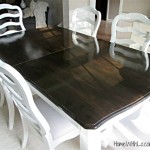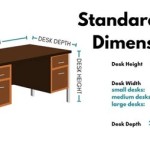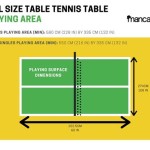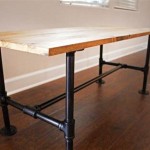What Is The Standard Size Of A Computer Table In Cm & Feet?
Choosing the right computer table involves more than just aesthetics. The table's dimensions significantly impact comfort, productivity, and overall workspace organization. Understanding standard sizes, along with individual needs, helps ensure a comfortable and efficient work environment. This article explores the typical dimensions of computer tables, providing a guide for selecting the optimal size for various users and spaces.
Standard Dimensions and Variations
While no single universally defined "standard" size exists for a computer table, several common dimensions prevail. These dimensions are influenced by factors such as intended use (e.g., gaming, general office work, studying), available space, and ergonomic considerations. A standard rectangular computer desk typically measures between 120 cm (47 inches or approximately 3.9 feet) and 150 cm (59 inches or approximately 4.9 feet) in width. The depth, which is the measurement from the front edge to the back, usually ranges from 60 cm (24 inches or 2 feet) to 75 cm (30 inches or 2.5 feet). The standard height is generally around 75 cm (30 inches or 2.5 feet).
Variations on these dimensions are common. Smaller desks designed for compact spaces or laptop use might be as narrow as 90 cm (35 inches or approximately 2.9 feet) in width and 45 cm (18 inches or 1.5 feet) in depth. Larger, L-shaped desks or U-shaped desks, designed for multiple monitors and extensive workspaces, can extend significantly beyond these measurements. These larger desks are often modular, allowing for customization to fit specific room configurations.
Ergonomic Considerations for Desk Dimensions
Ergonomics plays a crucial role in determining the appropriate desk size. A desk that is too high or too low can lead to poor posture, back pain, and other musculoskeletal issues. The height should ideally allow the user to type with their elbows bent at a 90-degree angle and their wrists straight. The desk's depth should provide ample space between the monitor and the user's eyes, typically recommended as an arm's length. Sufficient legroom is also essential, allowing the user to sit comfortably with their feet flat on the floor or on a footrest.
The size of the desk also needs to accommodate all necessary equipment, including the computer, monitor, keyboard, mouse, and any other peripherals. For users with multiple monitors or specialized equipment, a larger desk surface is often required. Adequate space for writing, reading, and other tasks should also be factored into the overall dimensions.
Choosing the Right Size for Your Needs
Selecting the appropriate computer table size depends on several factors. The user's height and body type are important considerations. Taller individuals might require a higher desk or an adjustable height desk, while shorter individuals might prefer a lower desk. The intended use of the desk also influences the size requirements. Gamers, for instance, often prefer larger desks to accommodate multiple monitors, gaming peripherals, and ample space for movement.
The available space in the room is a crucial factor. Measuring the designated area before purchasing a desk ensures that the chosen size fits comfortably without overcrowding the room. Considering the layout of the room and the placement of other furniture is also important for optimizing workspace flow and functionality. Budget constraints also play a role in the decision-making process. Larger desks, particularly those made from premium materials, tend to be more expensive than smaller, more basic models.
Measuring Desk Dimensions
When assessing desk dimensions, it's important to measure both in centimeters and feet/inches to ensure compatibility with various measurement systems and product listings. Using a measuring tape, accurately determine the width, depth, and height of the desk. For L-shaped desks or U-shaped desks, measure each section separately to obtain a comprehensive understanding of the overall size. Comparing these measurements to the available space in the room helps visualize the desk's fit and potential impact on the room's layout.

Pin Page

Study Table Studying Writing For Home Computer Office

Desk Height Calculator

Mallium Study Computer Table Office Desk Bluewud

This Is Why Desk Height Matters For Your Posture Arteil

S By Type

Office Desk Size Guide For Better Health And Ivity

Furneaser Qualish Office Desk Computer Table Wfh Gaming With 3 Shelf Engineered Wood Study In Buy

Stainless Steel White Study Desk Table Without Storage At 12338 82 Piece In Bengaluru

Royaloak Bell Engineered Wood Office Table








